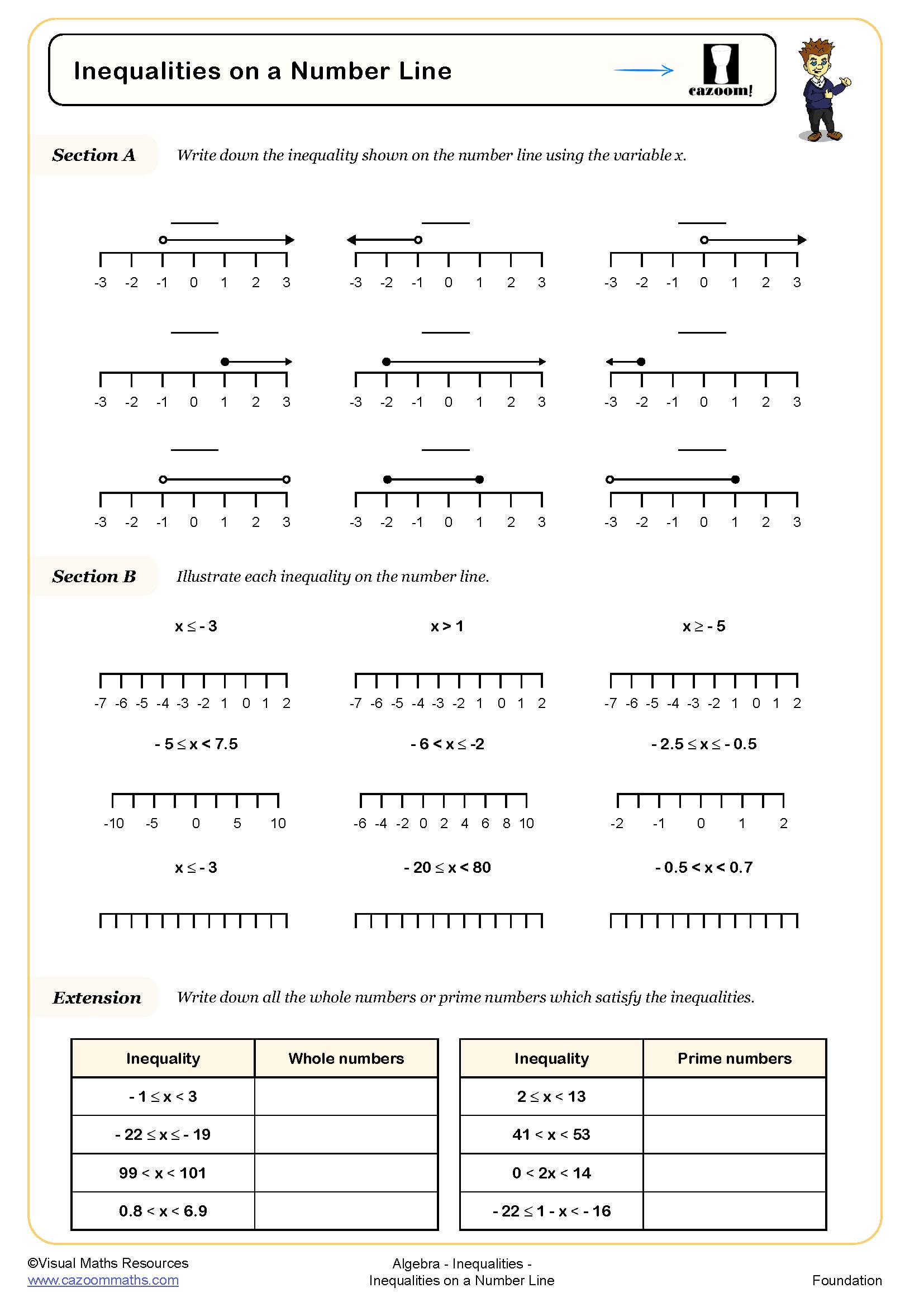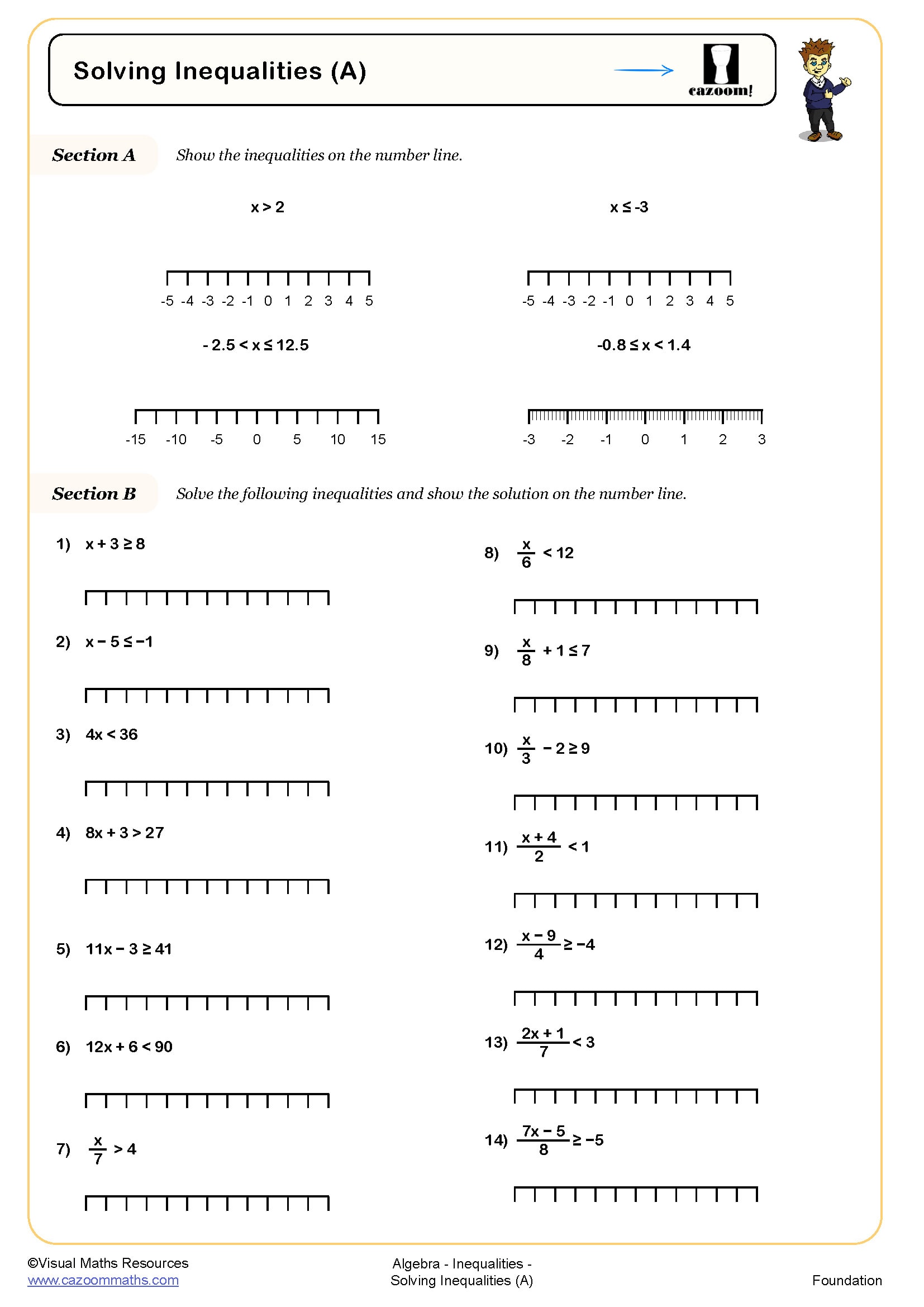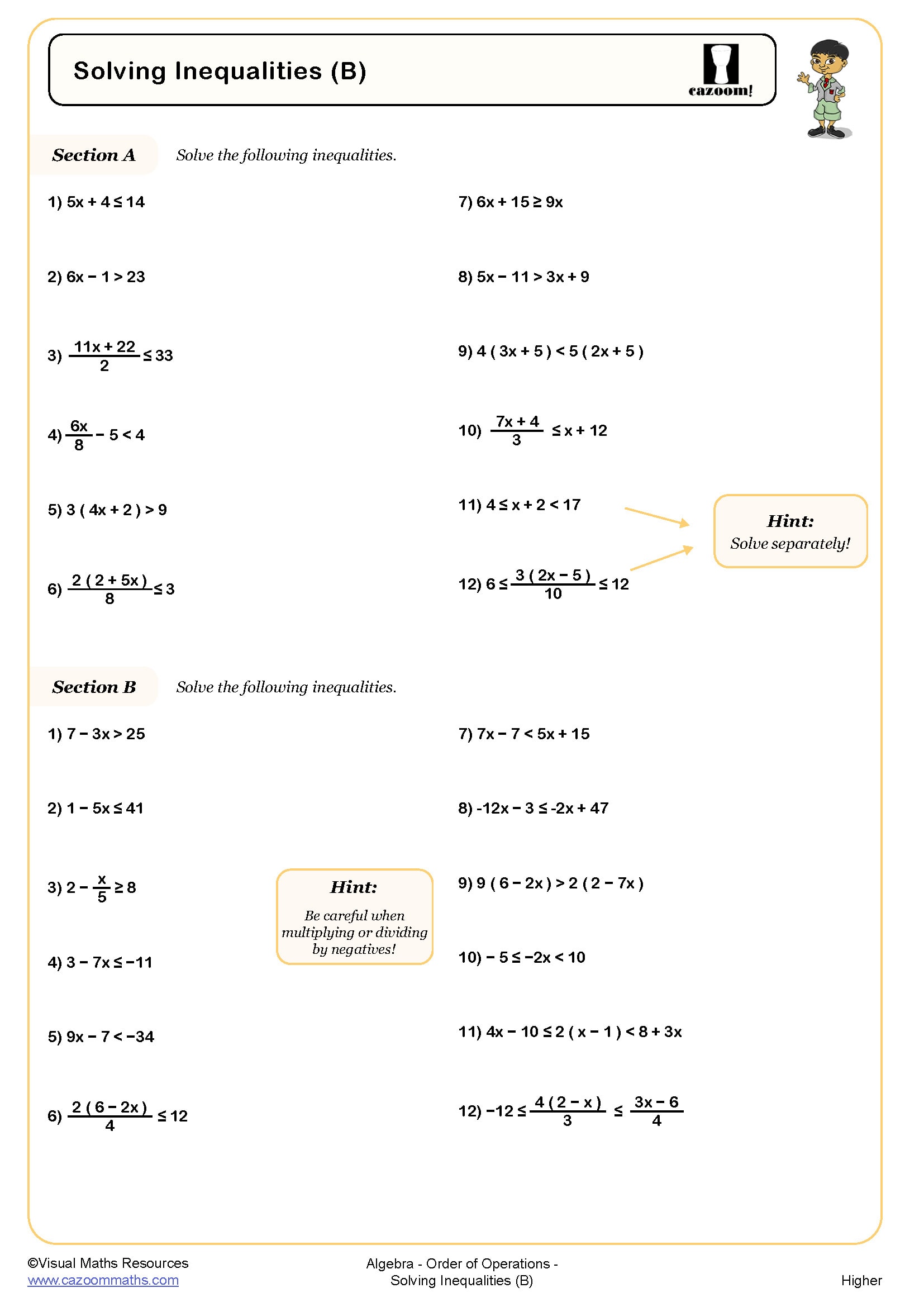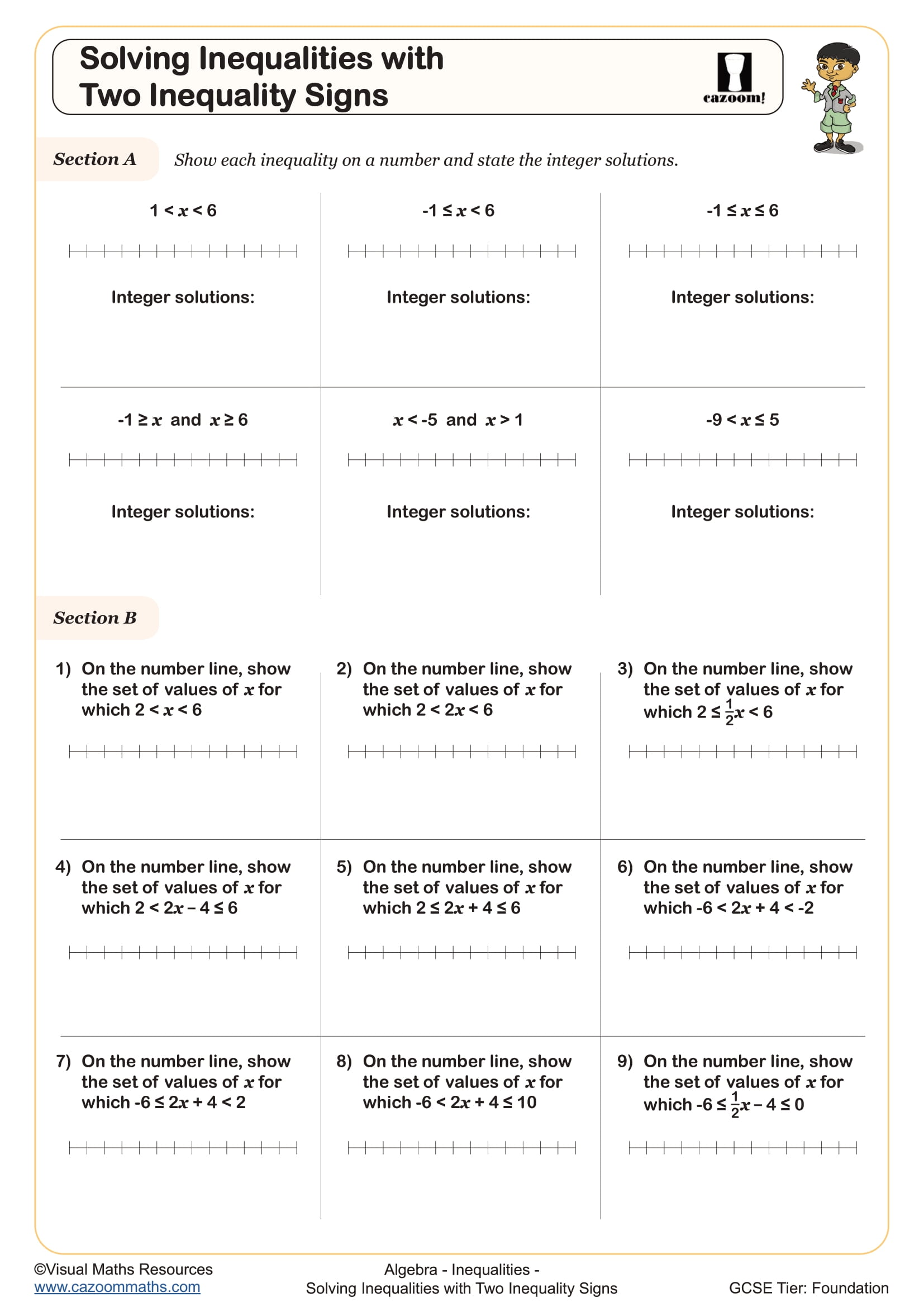Year 8 Inequalities Worksheets
Struggling With Inequalities? Download Our Printable Inequalities Activities
Year 8 students experience a major transformation in algebraic thinking through mastering inequalities because they transition from solving single solutions to understanding solution sets and ranges. Students develop essential analytical abilities through this conceptual transition, which becomes vital for advanced mathematical work, especially when they visualise mathematical relationships on number lines and coordinate grids. Students who practice different inequality problems develop their ability to work with algebraic expressions and maintain logical consistency, which forms the basis for most GCSE mathematics content. Students learn to identify patterns in mathematical relationships through progressing from basic comparisons to advanced scenarios which helps them understand how modifications to inequality sides affect the entire statement.
Specific learning benefits include:
• Strengthens algebraic manipulation techniques
• Develops critical thinking about solution sets
• Enhances spatial reasoning through graphing
• Introduces infinite solution concepts
• Improves logical deduction skills
• Builds systematic checking habits
• Reinforces order of operations understanding
Cazoom Maths KS3 Inequalities Worksheets: Complete Topic Coverage at a Glance
The worksheets begin with concrete number comparisons before progressing to abstract algebraic representations, ensuring conceptual understanding develops alongside procedural fluency. Students encounter carefully sequenced problems that introduce new techniques gradually, from basic symbol recognition through to solving multi-step inequalities with negative coefficients. Each resource balances computational practice with reasoning tasks, helping learners understand not just how to solve inequalities but why certain methods work.
The core skills covered include:
• Inequalities on a Number Line Students learn to visualise and represent inequality solutions as continuous rays or segments on number lines, building their understanding of infinite solution sets.
• Solving Inequalities (A) This worksheet introduces the fundamental techniques for solving linear inequalities, focusing on single-step problems that reinforce when inequality signs stay the same.
• Solving Inequalities (B) More challenging multi-step inequalities appear here, including those requiring division by negative numbers, where students must remember to flip the inequality sign.
• Solving Inequalities with Two Inequality Signs Compound inequalities challenge students to find values that satisfy two conditions simultaneously, preparing them for more complex mathematical constraints.
Traditional Lessons or Worksheets? Why Year 8 Inequalities Worksheets Work Best
Secondary mathematics departments value these worksheets for their careful balance between accessibility and challenge, enabling effective differentiation across mixed-ability classes. The structured format enables teachers to detect knowledge gaps immediately while offering suitable extension content for students who need it. The answer keys present mathematical thinking through complete working, which helps educators detect common errors regarding inequality operations, especially when dealing with sign changes during multiplication or division by negative numbers. The resources work perfectly with current lesson plans to give teachers options for teaching whole classes or working with small groups or individual students. The direct alignment of learning objectives with assessment criteria minimises preparation work so teachers can devote their time to responsive teaching instead of resource development. Students can focus on mathematical content because all Cazoom Maths materials maintain a uniform layout structure.




